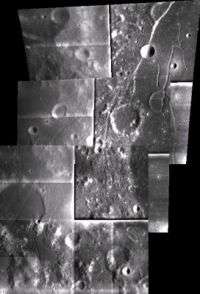SMART-1 diagnoses wrinkles and excess weight on the Moon

Owing to SMART-1’s high resolution and favourable illumination conditions during the satellite’s scientific operations, data from Europe’s lunar orbiter is helping put together a story linking geological and volcanic activity on the Moon.
The combination of high-resolution data from SMART-1’s AMIE micro-camera and data from the US Clementine mission is helping scientists determine the tectonics of the Moon’s giant basins and the history of volcanic flooding of mid-sized craters, inside and around the lunar basins.
“Thanks to low-elevation solar illumination on these high-resolution images”, says SMART-1 Project Scientist Bernard Foing, “it is now possible to study fine, small-scale geological features that went undetected earlier.”
The study provides new information on the thermal and tectonic history of the Moon and the processes following the formation of the large basins. There are approximately 50 recognizable lunar basins more than 300 km in diameter. They are believed to be created by the impact of asteroids or comets during the Lunar Late Heavy Bombardment period, 350-750 million years after the formation of the Moon. Some of these basins (mostly on the near side) were then filled in by lava originating from volcanic activity.
Combining information from SMART-1 and Clementine makes it possible to assess the link between fine geological structures, identified for the first time with AMIE’s high resolution, and the chemical composition of the study area. These fine geological structures form due to local mascon (mass concentration) or because of the thermal effects in the area related to volcanic activity. This deforms the crust giving it the appearance of being ‘overweight’ or ‘wrinkled’.
“Lunar crust is like a fragile skin, wrinkled due to local mass concentration or its thermal history”, says Bernard Foing, “as doctors, we searched for these skin-imprints but some may be masked underneath the last layers of basalt.”
Source: ESA





















